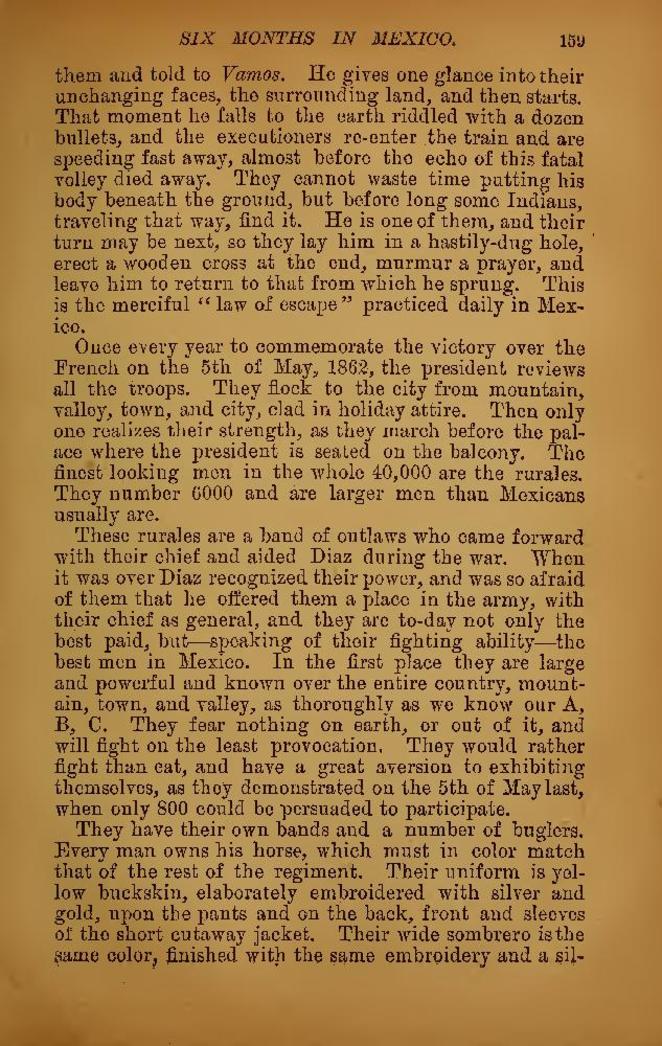them and told to Vamos. He gives one glance into their unchanging faces, the surrounding land, and then starts. That moment he falls to the earth riddled with a dozen bullets, and the executioners re-enter the train and are speeding fast away, almost before the echo of this fatal volley died away. They cannot waste time putting his body beneath the ground, but before long some Indians, traveling that way, find it. He is one of them, and their turn may be next, so they lay him in a hastily-dug hole, erect a wooden cross at the end, murmur a prayer, and leave him to return to that from which he sprung. This is the merciful "law of escape" practiced daily in Mexico.
Once every year to commemorate the victory over the French on the 5th of May, 1862, the president reviews all the troops. They flock to the city from mountain, valley, town, and city, clad in holiday attire. Then only one realizes their strength, as they march before the palace where the president is seated on the balcony. The finest looking men in the whole 40,000 are the rurales. They number 6000 and are larger men than Mexicans usually are.
These rurales are a band of outlaws who came forward with their chief and aided Diaz during the war. When it was over Diaz recognized their power, and was so afraid of them that he offered them a place in the army, with their chief as general, and they are to-day not only the best paid, but—speaking of their fighting ability—the best men in Mexico. In the first place they are large and powerful and known over the entire country, mountain, town, and valley, as thoroughly as we know our A, B, C. They fear nothing on earth, or out of it, and will fight on the least provocation. They would rather fight than eat, and have a great aversion to exhibiting themselves, as they demonstrated on the 5th of May last, when only 800 could be persuaded to participate.
They have their own bands and a number of buglers. Every man owns his horse, which must in color match that of the rest of the regiment. Their uniform is yellow buckskin, elaborately embroidered with silver and gold, upon the pants and on the back, front and sleeves of the short cutaway jacket. Their wide sombrero is the same color, finished with the same embroidery and a sil-
